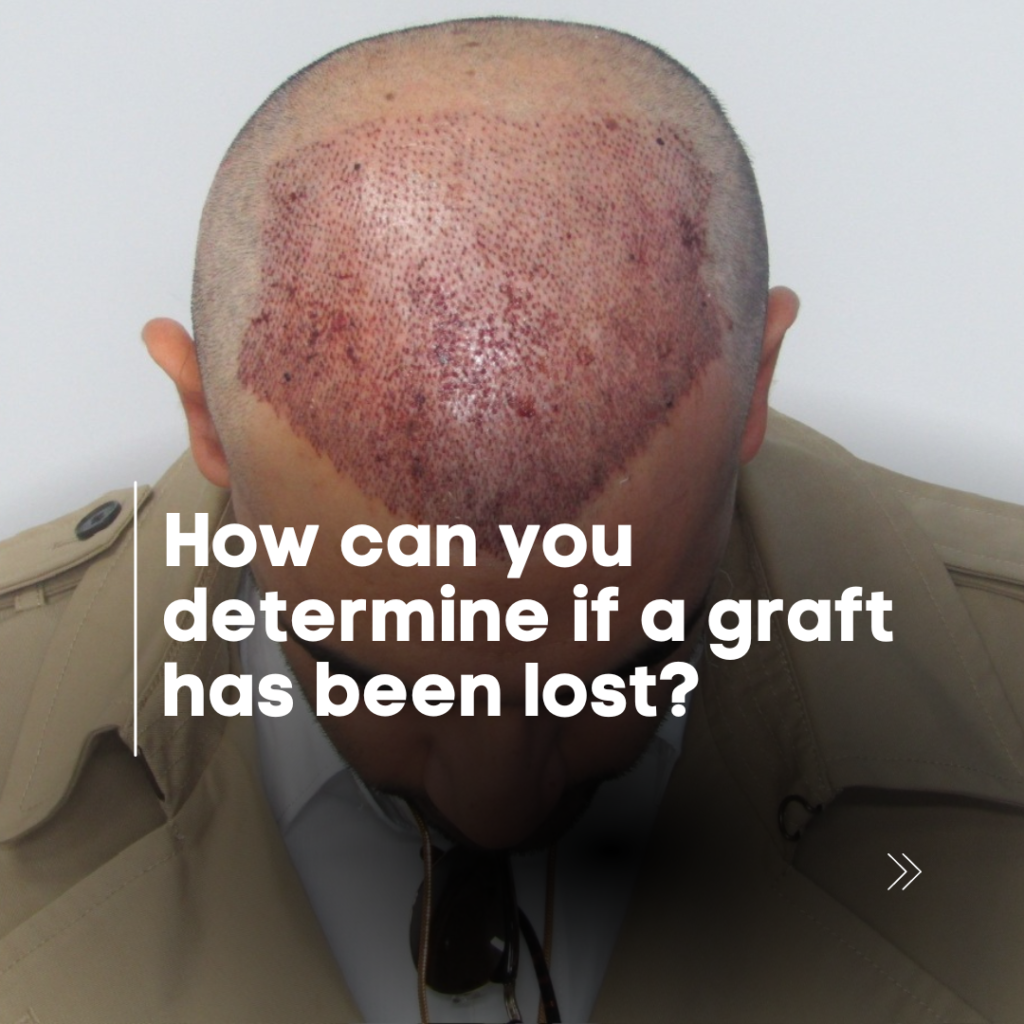No products in the cart.
February 29, 2024

Losing a graft in a hair transplant can be a concerning issue, but it’s essential to assess the situation accurately and consult with your hair transplant surgeon for proper guidance and evaluation. Here are steps to help you determine if you may have lost a graft:
Follow Post-Op Instructions: Start by reviewing the post-operative instructions provided by your surgeon. They will typically give you guidelines on what to expect and how to care for the transplanted area.
Monitor Shedding: It’s entirely normal for transplanted hair to shed in the weeks following the procedure. This shedding is part of the natural hair growth cycle and does not necessarily indicate graft loss. Grafted hair often goes into a resting phase before new growth occurs.
Check for Bleeding or Infection: If you notice any signs of infection, such as redness, swelling, pus, or increased pain around the transplanted area, contact your surgeon immediately. Infection can lead to graft loss if not treated promptly.
Avoid Touching or Scratching: Be cautious not to touch or scratch the transplanted area, as this can dislodge grafts. Follow your surgeon’s advice on how to gently cleanse and care for the area to minimize the risk of graft loss.
Evaluate the Grafted Area: If you suspect graft loss, examine the grafted area carefully. Look for small scabs or crusts that may have come off prematurely. This could indicate graft loss. Keep in mind that not all grafts may survive the transplant process, and a certain amount of graft loss is expected.
Contact Your Surgeon: If you believe you may have lost grafts or are concerned about the progress of your hair transplant, reach out to your surgeon for an evaluation. They can assess the situation, provide guidance, and make recommendations for any necessary follow-up procedures.
Patience Is Key: Remember that hair transplant results take time. It can take several months before you see significant growth and density in the transplanted area. Some grafts may shed initially, but new hair should eventually grow from the transplanted follicles.
In summary, it’s crucial to follow your surgeon’s instructions, be patient, and contact your surgeon if you have concerns about graft loss. Hair transplant procedures can have varying outcomes, and some graft loss can be a normal part of the process. Your surgeon is the best resource for evaluating and addressing any issues that may arise during your recovery.

We opened our clinic in Aventura, FL to offer top quality hair restorations at competitive prices.
Follow us on :
Copyright © 2024 American Mane | Powered by American Mane